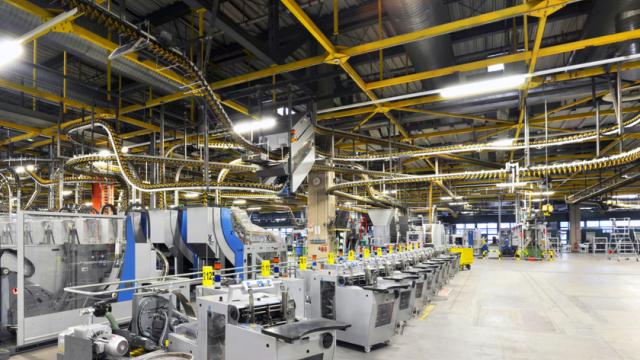Many facilities face occasional downtime due to economic slumps, business cycles and surplus inventory. Why not make the most of that downtime by looking for ways to cut costs and improve productivity? Reducing energy use is not only a great way to lower operating costs, it can reduce your environmental impact as well. An energy audit is a proven tool for finding energy-saving opportunities and an important first step in comprehensive energy management.
Facility Energy Assessment
Energy audits are usually administered by professional consultants, but you can also conduct your own. In a typical manufacturing facility, production equipment consumes the most energy and presents the greatest opportunity for energy savings. A comprehensive audit will include production equipment, building systems and operating and maintenance practices.
The Lawrence Berkeley National Laboratory's Industrial Energy Audit Guidebook covers the key elements in preparing for an energy audit. As you begin the process, keep the following action items in mind:
Motors, Drives and Controls
• Replace old and oversized motors with new, high-efficiency NEMA Premium models for savings of up to 5%.
• Replace standard V-belts with notched, high-torque belts.
• Turn off equipment when not in use, or install timers, sensors or other controls for automatic operation and shut-off.
Fans and Pumps
• Replace fans and pumps with more efficient models, or reduce fan speed with a motor replacement or by re-sizing the pump impeller.
• Install a variable-speed drive on cooling tower fans to reduce fan speeds during periods of low demand.
Compressed Air Systems
• Install a smaller compressed air system for use during off-peak hours.
• Repair air compressor leaks to maintain a lower discharge pressure.
• Maintain modulating controls, lubricate the compressor and clean or replace the intake filter as needed.
• Replace cooling and material transfer compressed-air applications with fans or mechanical, motor-controlled equipment.
Steam Systems
• Inspect steam traps regularly. One malfunctioning steam trap can cost thousands of dollars per year.
• Upgrade controls. Wireless steam trap monitoring systems are now available.
• Review the water treatment program. Successful water treatment will reduce boiler blowdown and the accompanying energy loss.
• Insulate the major components of the steam system.
• Repair leaks immediately. Energy costs associated with steam system leaks can be substantial.
Process Heating
• Set appropriate temperatures for part-load processing to save energy and avoid overheating.
• Increase insulation to reduce heat losses and save up to 15% on energy costs.
• Use direct natural gas firing instead of indirect steam heating, which can save you up to 45% on energy costs.
• Install a condensing economizer on combustion equipment to recover heat from the flue gas for energy savings of up to 90% or more.
HVAC
• Have your heating and cooling system checked and cleaned by a qualified technician regularly.
• Make sure walls and ceilings are well-insulated and the building envelope is sealed properly.
• Upgrade older space conditioning units with newer, more energy-efficient models.
• Ensure space conditioning systems are sized properly. Oversized systems can waste a substantial amount of energy.
• Use a building management system to adjust building temperatures on nights and weekends.
Lighting
• Replace existing lighting with light-emitting diodes (LEDs), including exit signs and task lighting.
• Install lighting control equipment such as dimmers, timers and sensors.
If you’re thinking of making some changes after your audit get in contact with your Account Advisor for information on rebates and incentives.
March 2024 Connections Newsletter
From industry trends and best practices to sustainability initiatives, our monthly Connections newsletter for Key Account customers provides valuable insights, updates, and resources to support our large business customers.
Full Newsletter